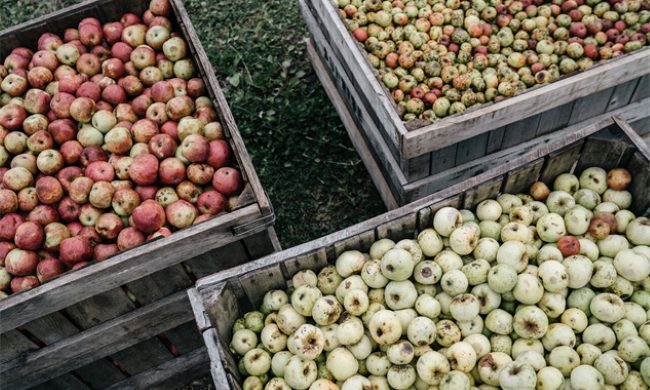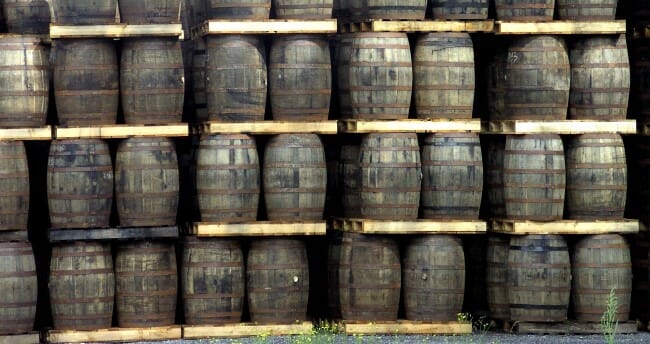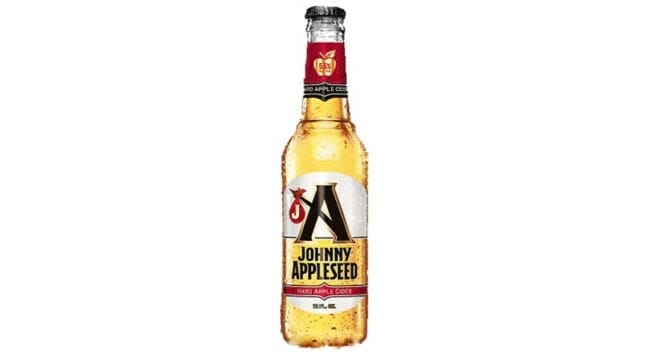Johnny Appleseed: American Mystic and Godfather of Hard Cider
Photos via Wikipedia, Howe's Historical Collection, Getty Images
This piece is part of a series of essays on alcohol history. You can read more here.
As an American people, we like to think of ourselves as a mixed race of hardy adventurers, pioneers and eccentrics. Rebellion is in our blood even now, generations removed from the revolutionaries who tore their independence from British clutches, but of all the British traditions those early Americans kept, surely it was an affinity for booze that remains our most beloved institution. And in those colonial days, when you thought of alcohol, you were probably thinking of hard cider—or just “cider,” the idea of non-alcoholic cider not yet existing at all.
Cider, as so many other pop histories have observed before, truly was the most important and universal of all early American alcoholic potables. Apples made the journey to the U.S. with the earliest of English settlers, not in the form of seeds (we’ll explain that later) but as graftings of preferred European apple varietals, all of which proceeded to immediately flounder in the harsher New England soil. The American apple would be not the product of European cultivation but our own wild terroir, aided along by some of those American eccentrics I spoke of above. And none were so intimately associated with the apple as one John Chapman, the American folk hero better known as Johnny Appleseed. As the dedicated missionary of an eccentric offshoot of Christianity that is largely forgotten today, Chapman made monumental contributions to the history of the American apple, although not in the way (or for the reasons) that many schoolchildren have been taught to believe. Chapman’s life, in fact, ultimately impacted everything from the availability of hard cider to the voting base that helped deliver the prohibition of alcohol in America.
So then, let’s unravel some of the true history of Johnny Appleseed and American hard cider.
Johnny Appleseed: Separating Fact from Legend
John Campbell was born in Massachusetts in 1774, on the eve of American independence, and from birth seemed possessed by the country’s pioneer (and entrepreneurial) spirit. He was, as depicted in pop culture, seemingly fond of all growing things in the American wilderness, and was by all accounts a genial and outgoing guy, albeit one who preferred to live a life of solitude. He never married, and indeed poured much of his passion into both his self-appointed work and his religious faith—all things that have been used in the centuries after to turn him into an American tall tale, as in the Disney cartoon below.
It was that aforementioned faith, though, that was a prime influence on why he would eventually travel through the country planting apple seeds. Campbell was a follower of an organization known as The New Church, a somewhat eccentric Christian denomination that saw its heyday in America (although it still exists in limited numbers today) during Campbell’s lifetime. Also known as the Swedenborgians, The New Church was the name given to followers of Swedish Christian mystic Emanuel Swedenborg, a scientist-turned-prophet who passed away in 1772, but was a prominent, contentious figure in European theology during his life. Although Swedenborg never founded a church himself, he believed he was a conduit for God’s word, and that he had personally witnessed the Last Judgment on Earth—invisible to everyone else but him—in 1757. Suffice to say: He was a bit out there. But after his death, an offshoot of Christian faith formed out of his theology and philosophy, which counted among its admirers many prominent 19th century figures, from W.B. Yeats and Robert Frost to Ralph Waldo Emerson and Johnny Appleseed himself.
Why does this matter? Well, the tenets of the Swedenborgian faith explicitly forbade the grafting of trees as a sort of moral stand, believing that the process of grafting was literally causing the plants to suffer or be stripped of their God-given right to grow. This meant, therefore, that Chapman was unable to plant existing, popular styles of apples in his travels—he had to plant from seeds.
 The logo of the Swedenborgian church, as it exists today.
The logo of the Swedenborgian church, as it exists today.
And here’s the weird thing about apple seeds: If you plant the seed of a certain apple variety, the apple tree that grows from that seed will produce fruit that is unrecognizably different from the one that spawned it. Because apples are what is referred to as extreme heterozygotes, their genetics vary wildly from generation to generation. The only way to keep growing the same varieties, therefore, is via grafting. The apples grown via seeds, on the other hand, were invariably too sour, too mealy and too mushy to simply eat—they’re what the apple world refers to as “spitters.” But the one thing these sour apples were good for? Making hard cider.
-

-

-

-

-

-

-

-

-

-

-

-

-

-

-

-

-

-

-

-

-

-

-

-

-

-

-

-

-

-

-

-

-

-

-

-

-

-

-

-

 Most of the heirloom apple varieties that once existed in the U.S. are lost to history.
Most of the heirloom apple varieties that once existed in the U.S. are lost to history. Cheap corn made for cheap whiskey, and drinking rates in the early 1800s soared.
Cheap corn made for cheap whiskey, and drinking rates in the early 1800s soared. AB InBev, unsurprisingly, saw the obvious marketing potential in naming their hard cider after Chapman.
AB InBev, unsurprisingly, saw the obvious marketing potential in naming their hard cider after Chapman.






































